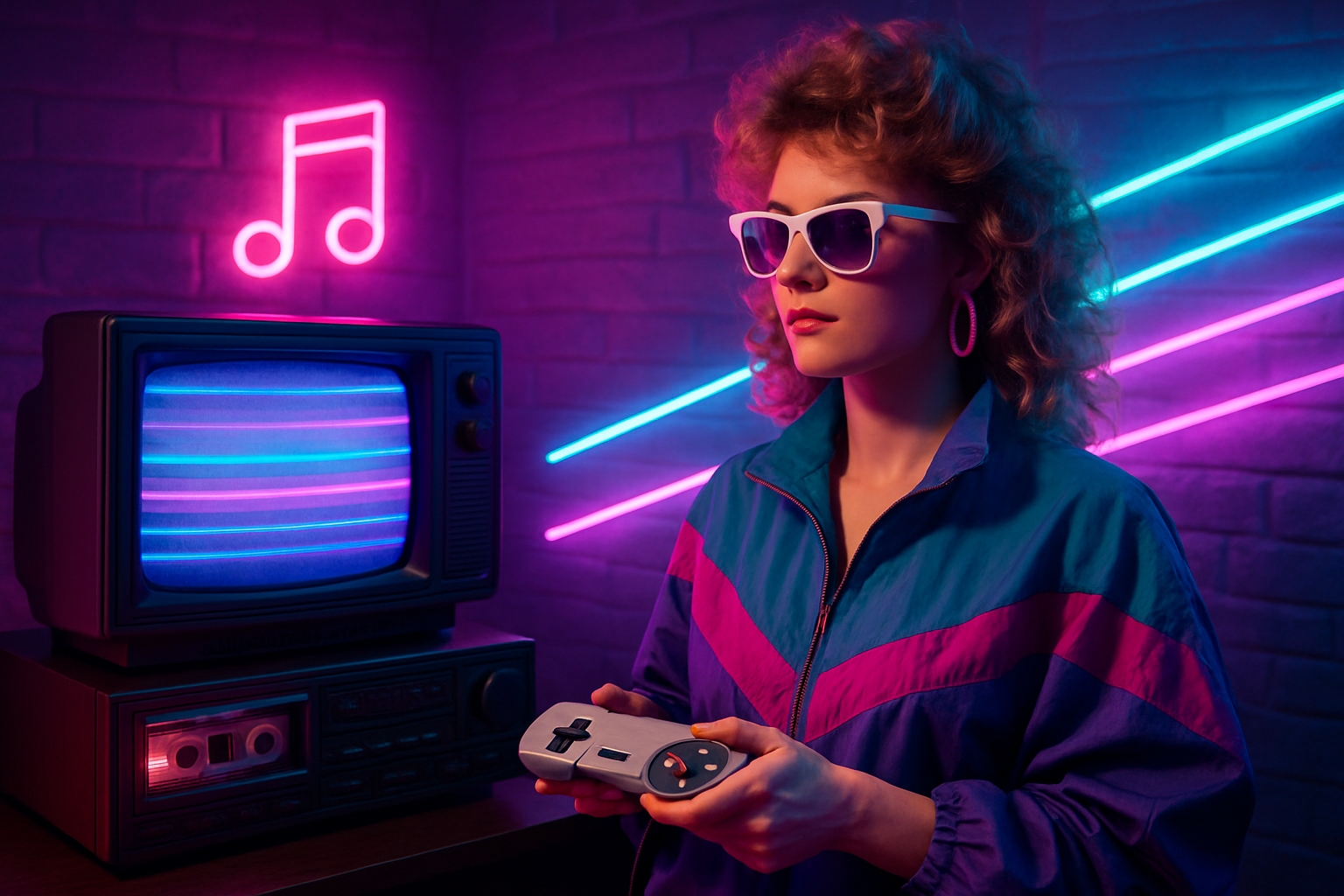Neon Nostalgia: The Retro-Futuristic Revival in Pop Culture
In an era of rapid technological advancement, a curious trend has emerged in the arts and entertainment landscape. The retro-futuristic aesthetic, characterized by its blend of vintage visuals and imagined futures, has experienced a remarkable resurgence. This neon-soaked revival is reshaping creative expressions across various mediums, from music and fashion to film and visual arts. As audiences seek comfort in familiar aesthetics while yearning for innovation, the retro-futuristic movement offers a unique cultural bridge between past and future.

The visual language of retro-futurism often includes sleek, streamlined designs, bold colors (especially neon), and a fascination with space-age technology. It’s a style that simultaneously looks backward and forward, creating a unique temporal dissonance that continues to captivate audiences today.
The Contemporary Resurgence
In recent years, there has been a notable uptick in the popularity of retro-futuristic themes across various media. This revival can be attributed to several factors, including nostalgia for simpler times, disillusionment with current technological realities, and a desire for escapism.
The music industry, in particular, has embraced this aesthetic wholeheartedly. Synthwave, a genre that emerged in the mid-2000s, draws heavily from the sounds and visuals of 1980s pop culture, especially science fiction and action films. Artists like The Midnight, Kavinsky, and Com Truise have garnered significant followings by creating atmospheric electronic music that evokes a sense of retrofuturistic nostalgia.
Visual Arts and Design
In the realm of visual arts and design, the retro-futuristic revival has manifested in various forms. Graphic designers are increasingly incorporating elements of vintage sci-fi illustrations into their work, creating visuals that feel both familiar and fantastical.
The popularity of this aesthetic has also influenced product design. From retro-styled appliances with modern functionality to gaming consoles that evoke memories of earlier generations, companies are capitalizing on the appeal of nostalgia combined with futuristic elements.
Film and Television
The entertainment industry has been quick to tap into the retro-futuristic trend. TV shows like Stranger Things have successfully blended 1980s nostalgia with science fiction elements, creating a compelling narrative that resonates with multiple generations of viewers.
In cinema, films such as Blade Runner 2049 have revisited and expanded upon earlier visions of the future, maintaining the aesthetic of their predecessors while incorporating contemporary visual effects. This approach not only pays homage to classic science fiction but also offers a fresh perspective on how past generations imagined the future.
Fashion and Lifestyle
The influence of retro-futurism extends beyond the screen and into everyday life. Fashion designers have embraced the aesthetic, creating collections that blend vintage silhouettes with futuristic materials and neon accents. This trend has trickled down to street fashion, with young consumers eagerly adopting looks that could be described as cyberpunk chic.
Even in interior design, there’s a growing interest in creating spaces that feel simultaneously retro and futuristic. Neon lighting, chrome accents, and geometric patterns are being used to transform homes and public spaces into environments that feel lifted from a sci-fi film.
The Psychology Behind the Trend
The appeal of retro-futurism in contemporary culture goes beyond mere aesthetics. It speaks to a collective yearning for a future that never came to be – one filled with optimism and wonder, rather than the often dystopian realities we face today.
By reimagining the past’s vision of the future, artists and creators offer audiences a form of escapism that is both comforting in its familiarity and exciting in its possibilities. It allows us to explore alternative timelines and question our current trajectory, all while wrapped in the warm glow of nostalgia.
Critiques and Considerations
While the retro-futuristic revival has been largely embraced, it’s not without its critics. Some argue that the trend represents a lack of originality in contemporary culture, a recycling of ideas rather than true innovation. Others point out that nostalgia for past eras often glosses over the social and political realities of those times, potentially romanticizing periods marked by inequality and conflict.
Despite these critiques, the movement continues to gain momentum, evolving and adapting as it intersects with other cultural trends and technological developments.
The Future of Retro-Futurism
As we move further into the 21st century, the question arises: what is the future of retro-futurism? Will it continue to captivate audiences, or will it eventually be replaced by new aesthetic movements?
The enduring appeal of retro-futurism suggests that it’s more than just a passing trend. Its ability to blend nostalgia with speculation about the future gives it a unique cultural resonance. As long as there’s a desire to imagine alternative futures and reinterpret the past, retro-futurism will likely continue to evolve and influence creative expression.
Moreover, as we face global challenges and rapid technological change, the optimism and wonder inherent in retro-futuristic visions may become increasingly valuable. They offer a counterpoint to dystopian narratives, reminding us of the potential for positive change and the enduring human capacity for imagination and innovation.
In conclusion, the retro-futuristic revival represents more than just a stylistic trend. It’s a cultural phenomenon that reflects our complex relationship with the past, present, and future. By reimagining yesterday’s tomorrows, we gain new perspectives on our own time and the possibilities that lie ahead. As we continue to navigate an uncertain future, the neon glow of retro-futurism offers both a comforting link to the past and a beacon of hope for what’s to come.





